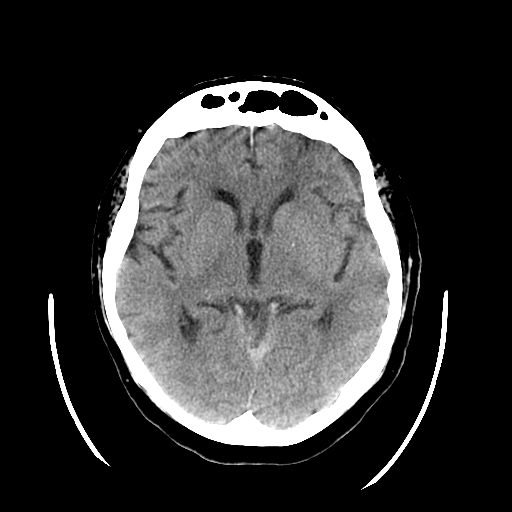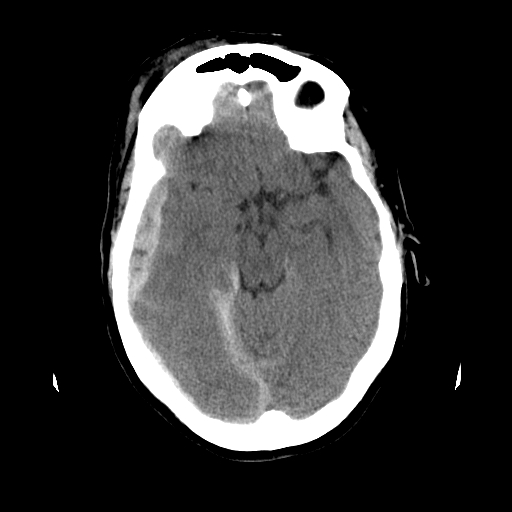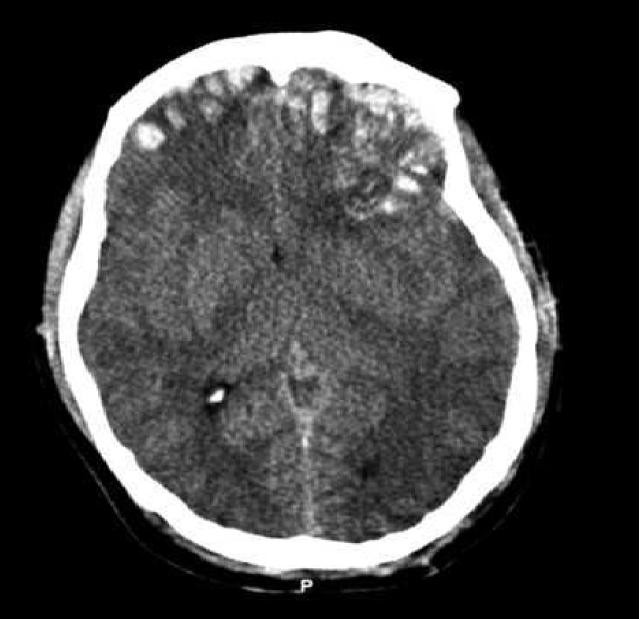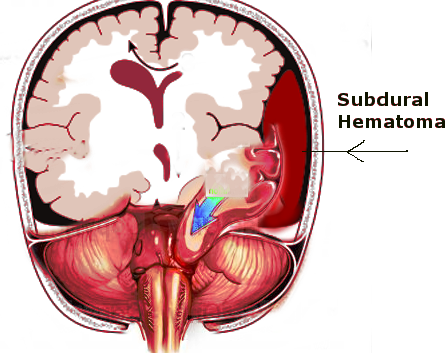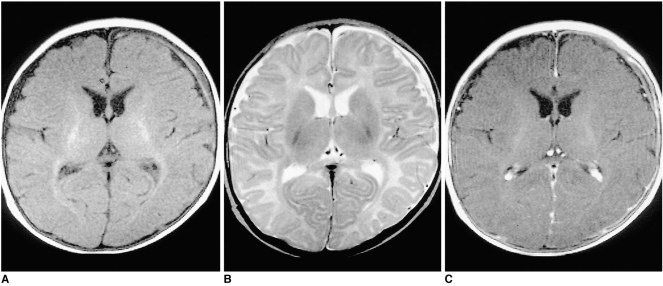[1]
Cheshire EC, Malcomson RDG, Sun P, Mirkes EM, Amoroso JM, Rutty GN. A systematic autopsy survey of human infant bridging veins. International journal of legal medicine. 2018 Mar:132(2):449-461. doi: 10.1007/s00414-017-1714-3. Epub 2017 Oct 26
[PubMed PMID: 29075919]
Level 3 (low-level) evidence
[2]
Bode-Jänisch S,Bültmann E,Hartmann H,Schroeder G,Zajaczek JE,Debertin AS, Serious head injury in young children: birth trauma versus non-accidental head injury. Forensic science international. 2012 Jan 10
[PubMed PMID: 21868179]
[3]
Choudhary AK, Servaes S, Slovis TL, Palusci VJ, Hedlund GL, Narang SK, Moreno JA, Dias MS, Christian CW, Nelson MD Jr, Silvera VM, Palasis S, Raissaki M, Rossi A, Offiah AC. Consensus statement on abusive head trauma in infants and young children. Pediatric radiology. 2018 Aug:48(8):1048-1065. doi: 10.1007/s00247-018-4149-1. Epub 2018 May 23
[PubMed PMID: 29796797]
Level 3 (low-level) evidence
[5]
Rao MG,Singh D,Vashista RK,Sharma SK, Dating of Acute and Subacute Subdural Haemorrhage: A Histo-Pathological Study. Journal of clinical and diagnostic research : JCDR. 2016 Jul
[PubMed PMID: 27630864]
[6]
Walter T, Meissner C, Oehmichen M. Pathomorphological staging of subdural hemorrhages: statistical analysis of posttraumatic histomorphological alterations. Legal medicine (Tokyo, Japan). 2009 Apr:11 Suppl 1():S56-62. doi: 10.1016/j.legalmed.2009.01.112. Epub 2009 Mar 18
[PubMed PMID: 19299189]
[7]
Amagasa S, Matsui H, Tsuji S, Moriya T, Kinoshita K. Accuracy of the history of injury obtained from the caregiver in infantile head trauma. The American journal of emergency medicine. 2016 Sep:34(9):1863-7. doi: 10.1016/j.ajem.2016.06.085. Epub 2016 Jun 29
[PubMed PMID: 27422215]
[8]
Doumouchtsis SK,Arulkumaran S, Head injuries after instrumental vaginal deliveries. Current opinion in obstetrics
[PubMed PMID: 16601472]
Level 3 (low-level) evidence
[9]
Gencturk M, Tore HG, Nascene DR, Zhang L, Koksel Y, McKinney AM. Various Cranial and Orbital Imaging Findings in Pediatric Abusive and Non-abusive Head trauma, and Relation to Outcomes. Clinical neuroradiology. 2019 Jun:29(2):253-261. doi: 10.1007/s00062-018-0663-7. Epub 2018 Jan 23
[PubMed PMID: 29362831]
[10]
Kralik SF,Yasrebi M,Supakul N,Lin C,Netter LG,Hicks RA,Hibbard RA,Ackerman LL,Harris ML,Ho CY, Diagnostic Performance of Ultrafast Brain MRI for Evaluation of Abusive Head Trauma. AJNR. American journal of neuroradiology. 2017 Apr
[PubMed PMID: 28183837]
[11]
Czosnyka M, Pickard JD, Steiner LA. Principles of intracranial pressure monitoring and treatment. Handbook of clinical neurology. 2017:140():67-89. doi: 10.1016/B978-0-444-63600-3.00005-2. Epub
[PubMed PMID: 28187815]
[12]
Wakai A, McCabe A, Roberts I, Schierhout G. Mannitol for acute traumatic brain injury. The Cochrane database of systematic reviews. 2013 Aug 5:2013(8):CD001049. doi: 10.1002/14651858.CD001049.pub5. Epub 2013 Aug 5
[PubMed PMID: 23918314]
Level 1 (high-level) evidence
[13]
Mangat HS,Härtl R, Hypertonic saline for the management of raised intracranial pressure after severe traumatic brain injury. Annals of the New York Academy of Sciences. 2015 May
[PubMed PMID: 25726965]
[14]
Rumalla K,Letchuman V,Smith KA,Arnold PM, Hydrocephalus in Pediatric Traumatic Brain Injury: National Incidence, Risk Factors, and Outcomes in 124,444 Hospitalized Patients. Pediatric neurology. 2018 Mar
[PubMed PMID: 29429778]
[15]
Castellani RJ, Mojica-Sanchez G, Schwartzbauer G, Hersh DS. Symptomatic Acute-on-Chronic Subdural Hematoma: A Clinicopathological Study. The American journal of forensic medicine and pathology. 2017 Jun:38(2):126-130. doi: 10.1097/PAF.0000000000000300. Epub
[PubMed PMID: 28319470]
[16]
Zakaria Z, Kaliaperumal C, Crimmins D, Caird J. Neurosurgical management in children with bleeding diathesis: auditing neurological outcome. Journal of neurosurgery. Pediatrics. 2018 Jan:21(1):38-43. doi: 10.3171/2017.6.PEDS16574. Epub 2017 Nov 10
[PubMed PMID: 29125443]
[17]
Payne FL, Fernandez DN, Jenner L, Paul SP. Recognition and nursing management of abusive head trauma in children. British journal of nursing (Mark Allen Publishing). 2017 Sep 28:26(17):974-981. doi: 10.12968/bjon.2017.26.17.974. Epub
[PubMed PMID: 28956988]
[18]
Rumalla K, Smith KA, Letchuman V, Gandham M, Kombathula R, Arnold PM. Nationwide incidence and risk factors for posttraumatic seizures in children with traumatic brain injury. Journal of neurosurgery. Pediatrics. 2018 Dec 1:22(6):684-693. doi: 10.3171/2018.6.PEDS1813. Epub
[PubMed PMID: 30239282]
[19]
van Essen TA, Dijkman MD, Cnossen MC, Moudrous W, Ardon H, Schoonman GG, Steyerberg EW, Peul WC, Lingsma HF, de Ruiter GCW. Comparative Effectiveness of Surgery for Traumatic Acute Subdural Hematoma in an Aging Population. Journal of neurotrauma. 2019 Apr 1:36(7):1184-1191. doi: 10.1089/neu.2018.5869. Epub 2018 Oct 17
[PubMed PMID: 30234429]
Level 2 (mid-level) evidence

